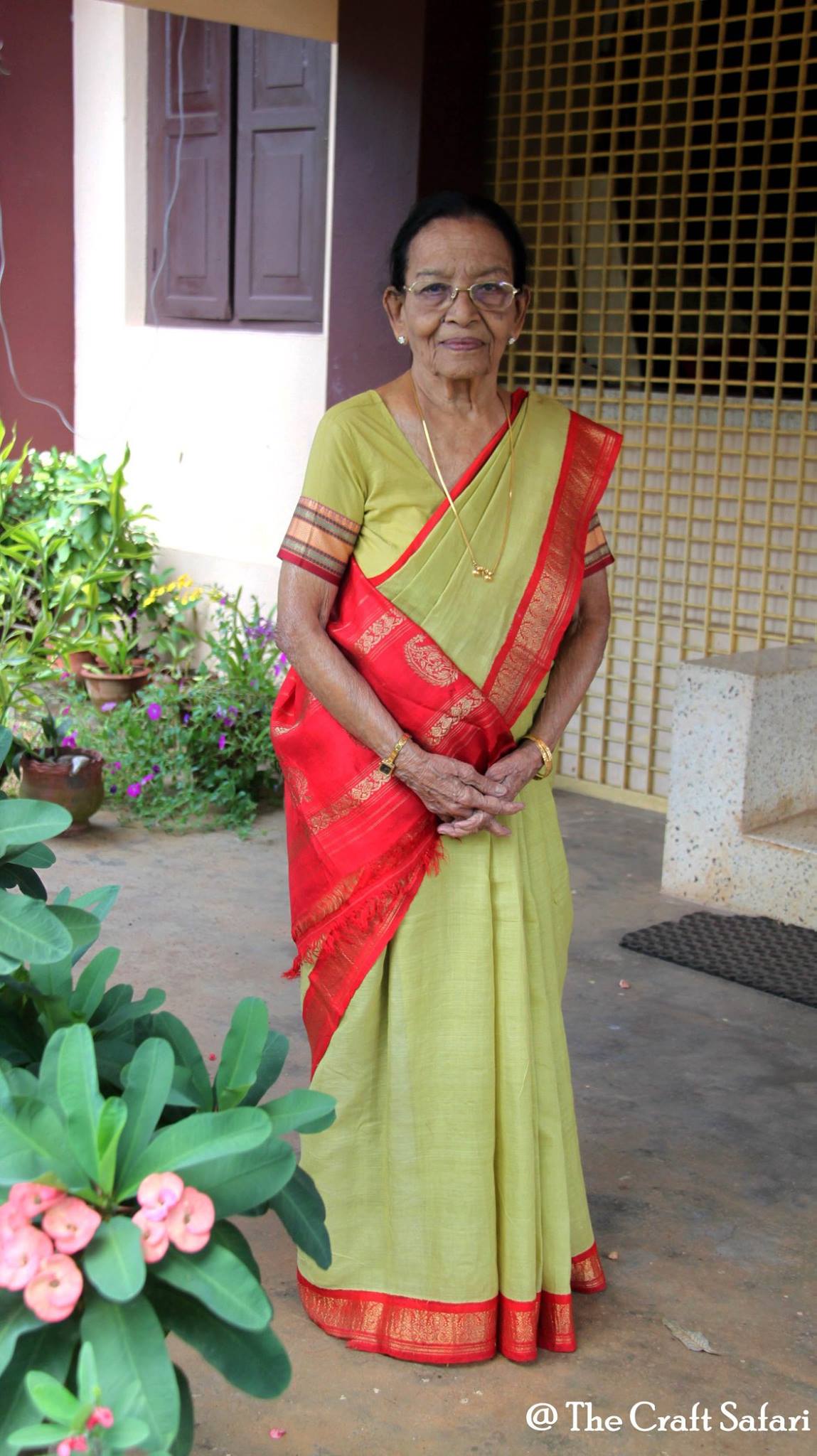Me and my Saris in the USA
I went to the U.S.A under the auspices of a consortium of Women’s college, supported by the Ford Foundation. I was on a deputation from my university, from 1965-1966. I came back and joined duty in September 1966. It was a wrench leaving my aged parents back in Kerala, and my husband in Hyderabad and to add to add to my worries my husband suddenly developed diabetes.
Yet inspite of all odds against me, for me it was a wonderful year, a new experience and an exciting exposure. I decided to be myself, and remain a traditional Indian and not to copy anyone else. Six of us had been selected from India by the consortium to visit the USA but we were placed in different states. So I was alone at Atlanta, Georgia, and later at Charlotte, North Carolina. AT Georgia, I was in a prestigious Women’s college- Agnes Scott, Decatur, Atlanta.
We were given an increase in the weight allowance by the Airlines and so I had two suitcases packed to capacity. I carried with me a lot of saris. After all a women’s best friends are her saris. I carried with me traditional saris including Kanchi saris, Gadwals and Pochampallies. I am glad I took them, because in them I looked a traditional South Indian. I took nearly 24 of them. All the saris were not mine; a few were loaned to me by my sisters. I took good care of them and returned them safely when I came back.
The Kanchi saris were just what I needed .They are thick and keep you warm. They have a wonderful shine of pure silk thread. The weave is soft and the colours are breathtaking. They drape well and when worn. They look rich, elegant and graceful. In a place like Atlanta where it was cold (though not as cold as in the Northern states), for a South Indian like me the Kanchis kept me comfortable.
In 1965, in Atlanta there were very few Indians- only a couple of families. There were some boys studying at the Georgia Technology for Engineering. Thus the Agnes Scott college was excited at having a sari-clad Indian on the campus. It was an eye-catching phenomenon. As a result of my past experience, I decided to dress well. I believed in dressing neatly and my students and colleagues in Hyderabad had always commented on that. I may not have worn the most expensive saris to college but certainly I wore them well. My saris- mainly well starched cottons- did not get crushed and crumbled and the students would ask me mischievously whether I got the saris ironed again during the lunch break. Some girls tried imitating me in wearing saris.
I had Kanchi Saris in various colors. My favourite was a red with a broad gold border. I had a golden yellow sari with green border. A deep blue sari with gold border used to be eye-catching. I had saris in orange color with checks and yellow border. I had a couple of saris of deep violet, almost magenta with red border, and a mustard Kanchi with green border. Green was not my favourite color, yet I had with me three or four green saris with contrasting borders. All saris had distinctive palloos. I remember a grey sari with silver dots. I also took with me two Kanchis I had got embroidered with Cutch work from Nagpur. I also remember two plain Kanchis- pink and green and I wore them with choli blouses with border on the sleeves. I used to stitch my own blouses ( till recently, I did that) and so I had matching blouses for all the saris. All these saris were traditional and each sari was a perfect beauty
In Atlanta, in the college chapel and for that matter in the Assembly meetings, I stood out in my Kanchi Saris, in the midst of white shirts and black skirts and pants. The Kanchi saris are still made by weavers at home on their own looms. Even making the silk thread is a handloom industry.
People in Atlanta were shocked that the sari was 6 yards long and yet it was easy for one to wrap it around, and too so quickly. Some American friends used to invite me to their homes for small get-togethers where they would ask me to demonstrate how to wear a sari. They would exclaim –“My God! How quickly you wrap the six yards round you and that too so gracefully.” They were surprised that the pleats and the shoulder were neat and well arranged. I used to pin them up pn to the blouse from inside by using a safety pin. The pleats in the front also used to be neatly arranged and did not ever look clumsy.
My Midriff
One thing that looked strange to them was the fact that I exposed my midriff. After all, my blouses were not very short and so only a small part of the midriff could be seen. That was the fashion in India and I had been used to that. It seems in USA they seldom showed bare midriff though I must add, they were willing to show everything else. In India in recent times this fashion has caught on. In Atlanta and in Charlotte, I did not try any other dress. My friends- some of them took to pants and shirt, in order to with stand the extreme cold in the States.
Footwear
I did not like to wear shoes with sarees and I continued to wear slippers along with stockings. Everyone in Atlanta started looking for slippers with tongs for me. Finally as it was getting cold, I realized that my feet were more important than fashion and started using shoes. In Atlanta, a paper even wrote an article on “We are worrying about Mr. Philip’s feet”. I used to go and speak to various groups like schools, college, clubs, Rotarians, church groups etc. and the women would immediately ask me about my sari.
Gadwal Sarees
Along with Kanchi sarees, I had also taken a few Gadwal sarees. They used to be the pride of Andhra Pradesh. They are the master pieces of handloom weavers of Gadwal, a village I Andhra Pradesh. Raja of Gadwal still lives there. The weavers have their looms at home and the whole faily takes part in the weaving and then they are marketed in Hyderabad shops and elsewhere. The most distinctive feature of Gadwal saree is that while the body is fine cotton, the border is silk with gold. The Pallus are traditional with a lot of gold. They are lovely to wear and they look rich and elegant. The rich Reddy women of Hyderabad order special Gadwal sarees for them from the weavers, in special colours. Even now I have with me one of the Gadwals I have taken to the UAS- an olive green with gold and orange. The gold they use for the saree is 80% pure, so they say.
Now I am told that the traditional cotton Gadwals are almost out. The weavers have turned to weaving silk Gadwals which are very costly. Thus a very old handloom industry of cotton Gadwals is slowly dying. They are giving way to a new era-era of synthetic materials.
Pochampally Sarees
Like the Gadwal sarees, Pochampally Sarees are also a speciality of Andhra. It is woven at home on a weaver’s loom in families, in Pochampally. They do not use much gold and when they do, the gold is not very good, it turned dark soon. They use a lot of colours- 3 and 4 coloured pattern all over the saree, to make a beautiful multi-colored saree. There are also silk Pochampallis, with lovely sheen. I am told that production of both cotton and silk sarees has stagnated. They have been pushed out of market by new arrivals. All the handlooms are stagnating and they need government protection.
With new arrivals the traditional sarees are going way. In Chennai someone was telling me that now-a-days, for big functions like marriages etc, no one wears the traditional Kanchi sarees. They are out of vogue.
Many new styles and types have come to stay. The new sarees are – Chettinad sarees (earlier available only in Chennai, but now available in all South Indian shops), patch work sarees with attached borders, Mubhacum sarees (3 pieces attached) and the Pavadai Dhavani sarees ( 2 pieces). All youngsters have taken to them with a lot of joy and satisfaction. Traditional sarees have been dropped. New materials have also come into the market- materials one never heard of- Rasi silk, Koil kotas, Jute sarees, Banana fibre sarees and many more. A friend of mine who was a boutique owner once, tells me that the traditional sarees of olden times only linger on in memories of old women. The beauty of the wonderful sarees- all traditional- that I have worn in my life in India and the USA lingers on in my mind. With all my colourful sarees, my friends in Atlanta said that I brought to the campus a lot of “colour and laughter” Thank God for that.


Awesome madam! You are such an example that we could keep up our tradition where ever we go.
Such a pleasure to read this!!
dear mam, I read the wonderful experience you have and love for sarees. I am glad that you have joined the pact. I salute for you inspiration I wish long life for our old saree and wish the younger generation love the kanchi and gadwal and the cottons. love live ethnic sarees. with love